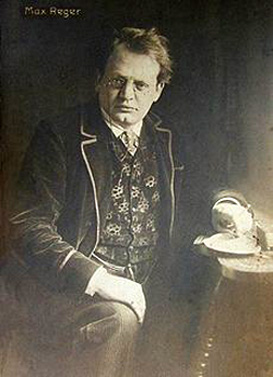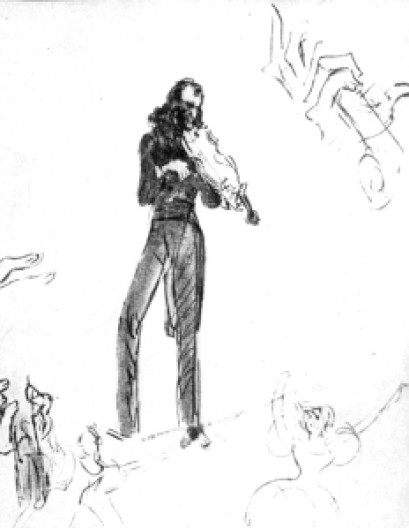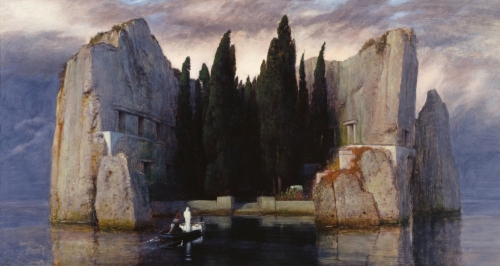The Bavarian composer Max Reger was famous for his appetite. According to his biographer Fritz Stein, he was capable of consuming up to 30 little Bavarian weißwürste or up to 12 Regensburger würste at one sitting. Such meals needed to be washed down with up to ten liters of beer, but after giving up alcohol while he was living in Meiningen (as conductor of the Hoforchester of Duke Georg II, from 1911 to 1915), he kept up with the sausage habit.
Thus, from a letter to the Duke of 27 May 1912: “Yesterday afternoon we took another walk to the Helenenhöhe, where I sampled the Thuringian Rostbratwürste for the first time, and immediately devoured ten of them, to my wife’s disgust. But they agreed with me extremely well; I worked until ten o’clock last night, woke up fit as a fiddle, and feel fine, although everybody warned me that the bratwurst was too greasy. They were revolted by my drinking cold milk with the ten sausages. I thus brilliantly disproved the old myth that says one has to have alcohol with greasy foods, in the form of schnapps.”
The Duke replied “In the name of God, don’t repeat that Würstiade very often, if you don’t want to get popped underground or into the crematorium soon. Mass-produced sausages often contain nasty things.”
This according to Über die Lebensgewohnheiten eines Genies by Hans-Joachim Marks (Mitteilungen der Internationalen Max-Reger-Gesellschaft XXI [2012] pp. 23-27).
Today is Reger’s 150th birthday! Below, Hans-Dieter Bauer performs Reger’s Humoresque for the left hand alone—presumably composed so he could continue to eat würste with his right hand.












